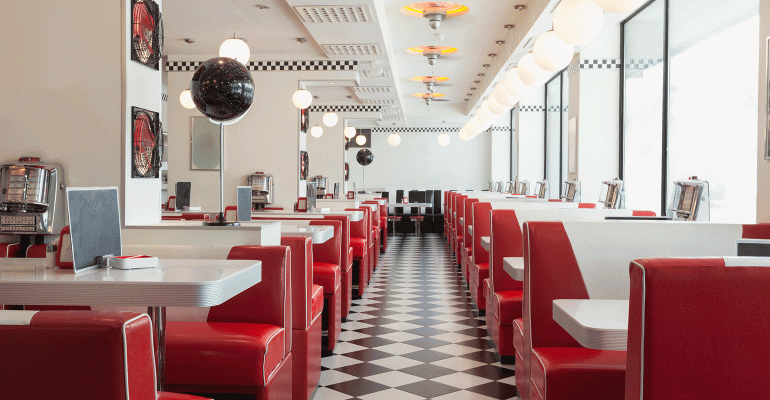A restaurant industry that struggled with weak sales and traffic in 2016 shouldn’t expect much improvement in 2017, according to The NPD Group.
Chicago-based NPD expects restaurant industry traffic to remain stalled in 2017, the market research firm said Tuesday.
Traffic will also continue its long-term shift away from dine-in brands to quick-service restaurants. NPD expects traffic at quick-service restaurants to grow 1 percent this year, while traffic at dine-in locations will fall 2 percent. Currently, the majority of restaurant visits go to limited-service concepts.
“It’s just a battle for share,” Bonnie Riggs, NPD restaurant industry analyst, told NRN. “More restaurants than visitors. And we need to keep in mind that competition is no longer just restaurant competitors. It has become a very fragmented market, and consumers have many options available to them to obtain a prepared meal.”
Industry growth, coupled with growth in prepared food offerings at convenience stores and grocers, has increased options available to consumers. But Americans are not increasing their dining at a corresponding rate. That’s putting pressure on restaurants to fight for their share of the pie.
NPD says that to succeed in 2017, restaurants will have to step up their game, get more innovative and use technology more strategically.
Younger consumers, including Millennials and younger Gen Z diners, are looking for experiences that are new and different. And operators that don’t innovate “will fall out of the consideration set and risk being overlooked by a large portion of the U.S. population,” NPD said.
“I really believe [innovation] to be the overarching theme,” Riggs said. “It is going to take creativity, uniqueness and staying ahead of the curve in terms of technology platforms.”
The industry will also find it more difficult to compete with grocers. Consumers eat more than 80 percent of meals at home and 20 percent from foodservice companies. The dollars spent between the two have been relatively even. But the industry will struggle to generate positive traffic as long as grocers lower prices while restaurants raise theirs.
Weak industry growth is coming despite numerous economic indicators that seemingly should work in restaurants’ favor: Unemployment is low. Wages are rising. Gas prices remain historically low. But economic data is “still not that great, and gasoline prices are on the rise again,” Riggs said.
Rising gas prices are particularly hard on younger consumers with more limited incomes, Riggs said.
“And, don’t forget that medical costs continue to rise, taking a deeper bite out of discretionary income,” she added.
Restaurants that want to stay relevant should focus on giving consumers more choices. NPD says more restaurant operators will offer digital menu options that will enable diners to customize their orders.
One of the big potential levers the industry can pull this year is technology. NPD expects mobile ordering to grow exponentially, as operators like Domino’s Pizza Inc. demonstrate the ability to effectively use mobile ordering to generate positive sales.
Likewise, delivery has big potential. NPD says restaurants should take full advantage of third-party delivery services like Grubhub, Amazon and DoorDash to bring food directly to consumers.
Riggs says the biggest beneficiaries will be full-service restaurants, particularly independents.
Still, she said, if that will succeed, the cost of delivery must ease.
“Consumers living in New York are used to these costs, but if delivery is going to continue to grow, more options need to be available in smaller cities and towns,” Riggs said. “When I did a report on delivery, consumers told us they want to pay a flat fee for the meal, no matter the cost of that meal, and that delivery fee was $5.”
Contact Jonathan Maze at [email protected]
Follow him on Twitter: @jonathanmaze





